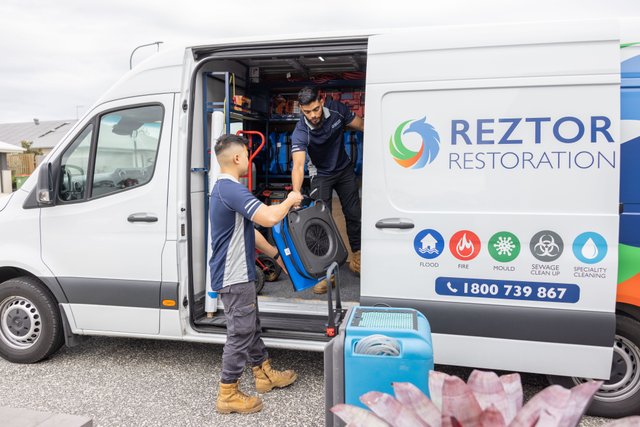How to Dry Wet Carpet Quickly and Safely (and When to Call the Pros)
How to Dry Wet Carpet Quickly and Safely (and When to Call the Pros)
When water soaks into carpet—whether from a burst pipe, leaking appliance, or heavy rain—every hour counts.
Moisture trapped in the carpet, underlay, and subfloor can cause mould growth, bad odours, and structural damage that turn a small spill into a major restoration bill.
This guide explains DIY steps to dry wet carpet for minor clean-water incidents and when it’s time to call an IICRC-certified restoration company such as Reztor Restoration.
Step 1: Stop the Source and Remove Standing Water
- Shut off the water supply if a pipe has burst.
- Extract pooled water with a wet/dry vacuum or mop and bucket.
The faster you remove surface water, the less time moisture has to migrate into the underlay.
Step 2: Pull Back and Inspect
- Lift a corner of the carpet to check the underlay and subfloor.
- If the underlay is saturated, it often needs to be replaced.
- Timber or particleboard subfloors should be inspected for swelling or delamination.
Step 3: Maximise Airflow
- Position high-velocity fans or air movers to circulate air across the carpet surface.
- Open windows if weather allows, but use dehumidifiers if humidity is high.
Step 4: Control Humidity
Running a commercial-grade dehumidifier is critical.
Lowering the relative humidity to below 50 % speeds evaporation and prevents mould growth.
Step 5: Clean and Disinfect
Even clean water can contain microbes.
- Lightly mist the carpet and underlay with an antimicrobial treatment approved for soft furnishings.
- Always test a small patch first to avoid colour changes.
When to Call a Professional
DIY methods are suitable only for Category 1 (clean) water and small areas (generally < 5 m²).
Call a professional if:
- Water is grey or black (from washing machines, dishwashers, sewage, or floodwater)
- The carpet was wet for more than 24 hours
- You notice a musty smell or visible mould
An IICRC-certified company such as Reztor Restoration uses truck-mounted extraction, thermal imaging, and commercial drying equipment to remove deep moisture and document the process for insurance claims.
Key Takeaways
- Act fast—the first 24 hours are critical.
- Remove water, circulate air, and dehumidify to prevent mould.
- Know your limits—if contamination or large areas are involved, professional restoration is safer and more cost-effective.
✅ Follow for More Home Restoration Tips
Want more practical guides on protecting your home from water damage, mould, and storm events?
Follow me here on Steemit and visit Reztor Restoration for expert advice and professional carpet cleaning services across Australia.
-01.png)
